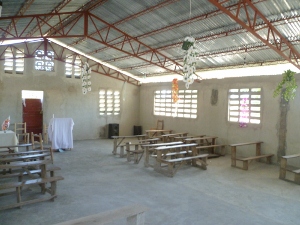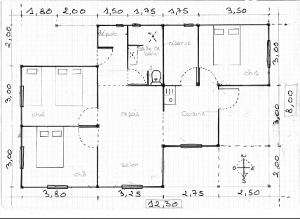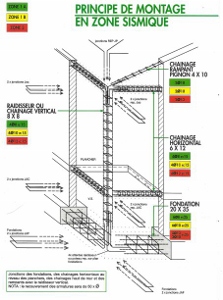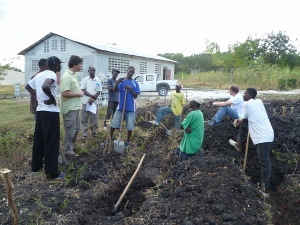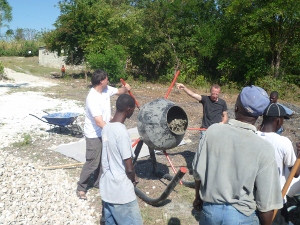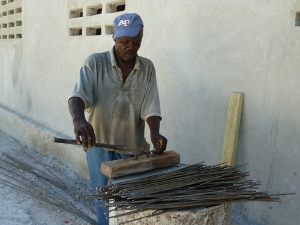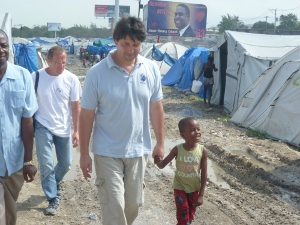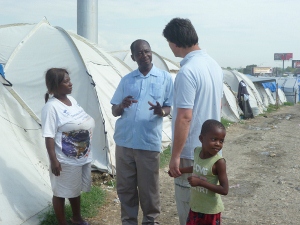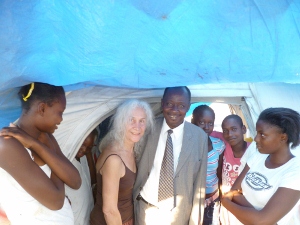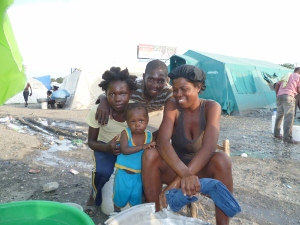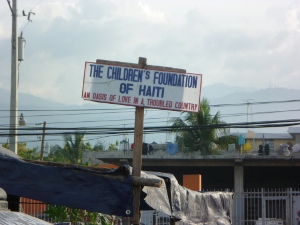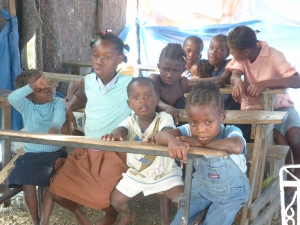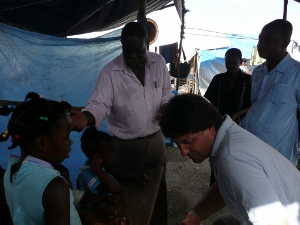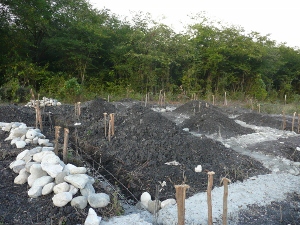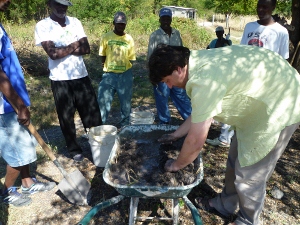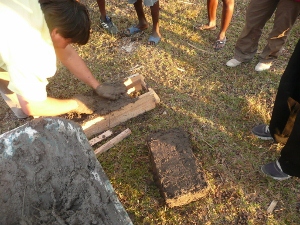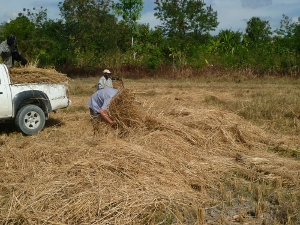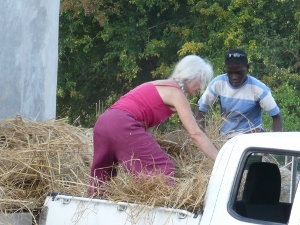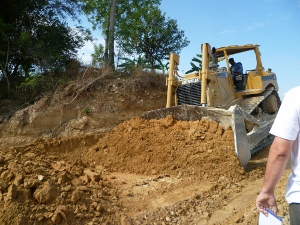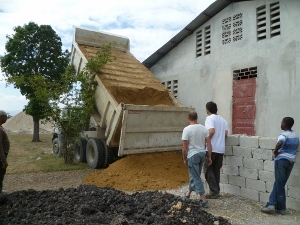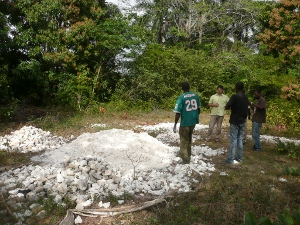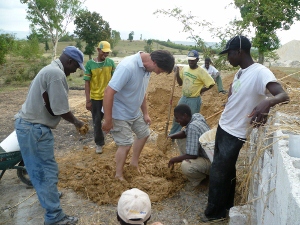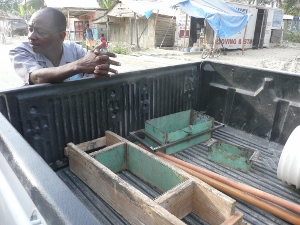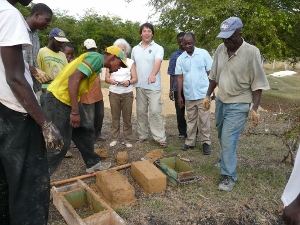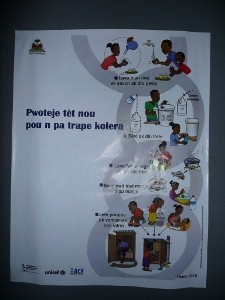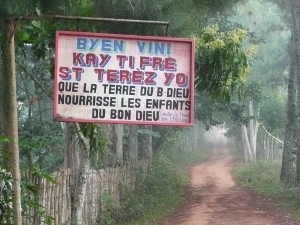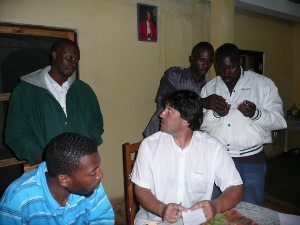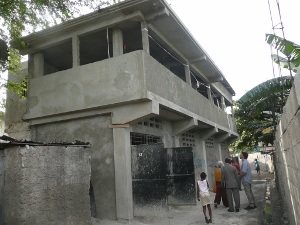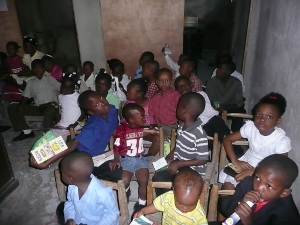Beginning of January 2011, a GHA team, in partnership with SFWA , went back to Haïti to carry on and develop already engaged projects. The main purpose is to build a dwelling home in Mirebalais, near to the already achieved church. This project has several objectives:
- Pass on construction techniques never used in Haïti such as parasismique foundations and the use of bricks made of clay and straw, and
- For the man in charge of the Community, that increased from 500 to 800 persons, the possibility to be permanently present and so be able to watch over the good running of the different activities (literacy, growing of grains and vegetables, orphanage).
The lately achieved building is spacious and pleasant. A literacy class opens early February and applies to about 35 children.
The school teacher is paid by the Association. This class is free for the children. An other class is also taking place in a church located in Domont, 10kms from here. About 35 children are attending this class.

String lines are used to laid out the foundations of the house, in conformity with the drawing.
The foundations are being made according to the highest standards and the techniques will be passed on to the Haïtian working men.
To facilitate the work, a hand concrete-mixer has been bought.
Longitudinal beams are hand-made and laid down according to the advices of the team artisan builder.
In the trench.
As the construction site is progressing, tours are made to the refugee camps in Port au Prince.
Single-parent families (single mothers) get support from the Association in order to have new housing.
A 10-member family who has been affected by cholera.
An orphanage, settled in the camp since last year, received help to return to deserted buildings left unoccupied after the earthquake. The furniture has been stolen by looters.
Other families have been receiving assistance, and also very poor children in the Mirebalais region where work continues.
The idea is to build a dwelling house with concrete parasismique structure and to build the walls and partitions with adobe bricks (a mixture of clay and straw). The main thing is to convince the local workmen who, on a cultural basis, are showing some reserve, having the impression to go backward.
Rice straw is being gathered in a neighbouring field.
Clay has been found thanks to the Public Works Company who is building the road from Port au Prince to Mirebalais. This clay is found extraordinary. One of the most beautiful clay ever seen by the team builder.
Mixed with clay, cement does not work properly because it becomes too watertight. So it’s necessary to add lime. This kind of material is not available through normal channels. It will be possible for us to get some by a farmer who is making it himself on the edge of a river.
The brick production is launched
The mould has been improved and is made of metal
The mason boss is unmoulding the first brick.
Others follow quickly.
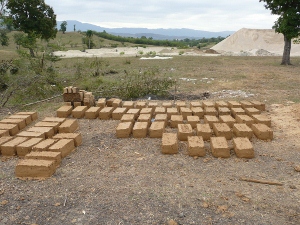
On the other hand, tablets are distributed on a large scale to people for purifying the water. Haïtian people are well aware of the spreading of cholera, which helps prevent an epidemic explosion. Specific drugs are left to the care of the mission nurse.
With the intention to visit a clay building, a trip up to Carice is undertaken. The team is welcomed by religious whose job is to help to the local farmers in developing their farms.
Their children will be able to attend school thanks to the Association support.
The damaged church of Port au Prince has been restored. The computing and sewing school will reopen soon. In the end, a literacy class will also be opened.
